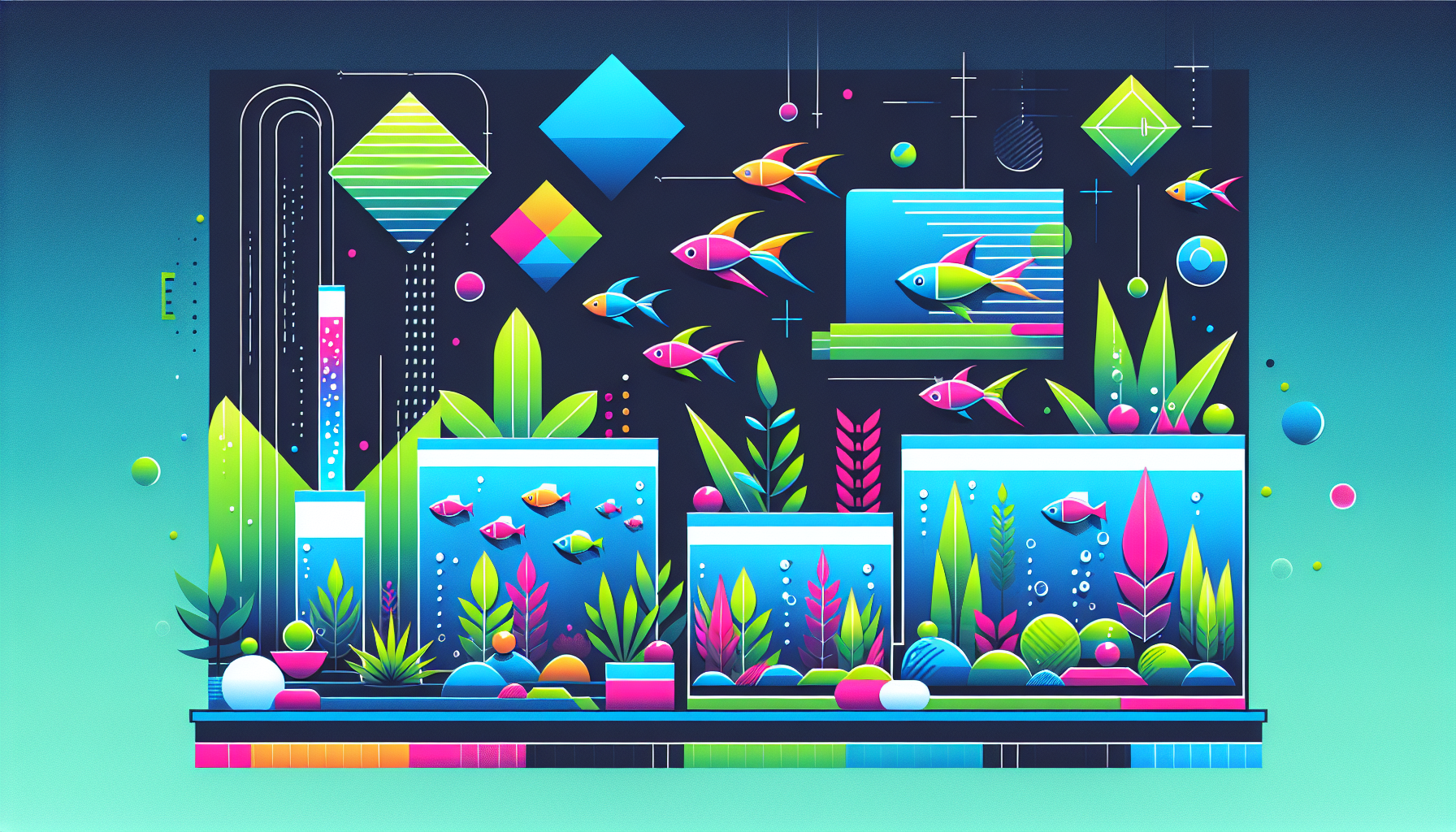The Beginner’s Guide to Aquascaping: Design, Setup, and Plant Selection
Are you fascinated by the art of aquascaping but unsure where to start? You’re not alone! Designing your first planted aquarium can be both exciting and overwhelming, but this comprehensive beginner’s guide will help you every step of the way. From choosing the right aquarium equipment to selecting beautiful aquatic plants, you’ll gain the confidence to create your very own underwater masterpiece.
What is Aquascaping?
Aquascaping is the craft of designing and arranging aquatic plants, rocks, driftwood, and substrate inside an aquarium to create visually stunning underwater landscapes. Whether you dream of a lush jungle, a minimalist Iwagumi, or a dramatic nature aquarium, aquascaping offers endless creative possibilities for hobbyists of all levels.
Planning Your Aquascape: Essential Considerations
1. Choosing the Right Aquarium Tank
Start by selecting an aquarium that suits your available space and budget. For beginners, a 10- to 20-gallon (38-76L) glass aquarium strikes a great balance—large enough to maintain stable water parameters and small enough to manage easily. Rimless tanks provide optimal viewing and modern aesthetics, making them popular for aquascaping projects.
2. Aquascape Styles
Popular aquascaping styles to consider include:
- Iwagumi: Focuses on minimalism and elegant rock arrangements.
- Nature Aquarium: Emulates natural scenes (mountains, forests, rivers) using driftwood, rocks, and plants.
- Dutch Style: Showcases vibrant, well-organized plant layouts with little to no hardscape.
Explore aquascaping styles to find one that suits your taste and space.
3. Selecting Appropriate Lighting
Proper lighting is crucial for healthy plant growth and vibrant colors. LED aquarium lights are energy-efficient, long-lasting, and available in various intensities suitable for different plant types. Be sure to match your lighting to your chosen aquascape style and plant species. Check out our aquascaping lighting guide for more details.
4. Substrate: The Foundation of Healthy Plants
A nutrient-rich aquarium substrate supports robust plant root development. Options include:
- Active aquasoils (ideal for demanding plants)
- Gravel or sand (best for low-maintenance setups or as top layers)
Combine different substrate layers for improved plant health and nutrient availability.
Step-by-Step: How to Set Up Your First Aquascape
1. Gather Your Aquascaping Equipment
- Aquarium tank (10-20 gallons recommended)
- Nutrient-rich substrate or aquasoil
- Hardscape materials (rocks, driftwood)
- LED aquarium lighting
- CO2 system (optional for advanced plant growth)
- Filtration (internal or external filter)
- Aquarium heater (for tropical setups)
- Aquascaping tools (tweezers, scissors)
2. Plan Your Layout
Sketch your layout on paper or use digital tools for inspiration. Place larger rocks or driftwood off-center, following the “rule of thirds” for natural aesthetics. Arrange hardscape before adding substrate, then tweak as needed to create depth and flow.
3. Add Substrate and Hardscape
Pour a layer of substrate, sloping it higher at the back to give your aquascape dimension. Secure rocks and driftwood firmly—these will anchor your design and serve as focal points.
4. Fill with Water & Plant Selection
Fill the tank halfway, then plant your chosen aquatic plants. Start with easy beginner favorites:
- Anubias – Hardy, slow-growing plant for attaching to rocks and wood
- Java Fern – Tolerates low light and wide water parameters
- Amazon Sword – Striking background plant
- Cryptocoryne – Compact midground plants in varied colors
- Dwarf Hairgrass – Popular carpeting plant for lush, green “lawns”
For more options, see our guide to the best beginner aquascaping plants.
5. Fill Completely & Install Equipment
After planting, finish filling the aquarium. Install your filter, heater, and lighting. If including a CO2 system, set it up according to manufacturer instructions. Start the equipment and check water parameters before adding any livestock.
Ongoing Maintenance for a Thriving Aquascape
Regular maintenance keeps your aquascape healthy and beautiful. Key tasks include:
- Weekly 30-50% water changes
- Trimming and replanting fast-growing stems
- Monitoring water parameters (ammonia, nitrite, nitrate, pH)
- Checking equipment functionality
- Removing algae as needed
For more aquarium care tips, visit our aquarium maintenance section.
Common Beginner Mistakes to Avoid
- Adding livestock before the nitrogen cycle is established
- Overcrowding with too many plants or decorations
- Ignoring regular pruning and maintenance
- Skipping water parameter checks
- Underestimating lighting or nutrient needs
Get Inspired: Explore Beautiful Aquascapes
Studying award-winning aquascapes is a great way to hone your skills and discover new ideas. Visit our aquascape gallery for inspiring layouts submitted by hobbyists worldwide.
Ready to Start Your Aquascaping Journey?
Now that you have the basics, dive deeper into the world of aquascaping! Browse our resource guides for more information on:
- Essential aquascaping tools
- Aquascaping competitions
- Best fish for planted tanks
- CO2 for plant growth
Share your progress, ask questions, or show off your finished scape in our community forums. Start creating your underwater world today and join the aquascaping movement!



